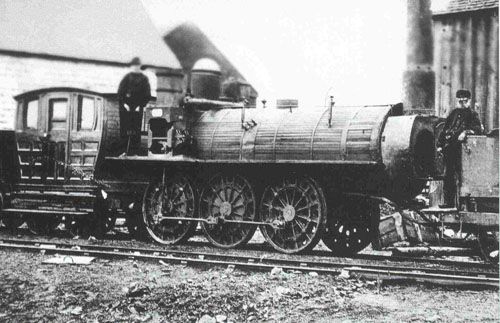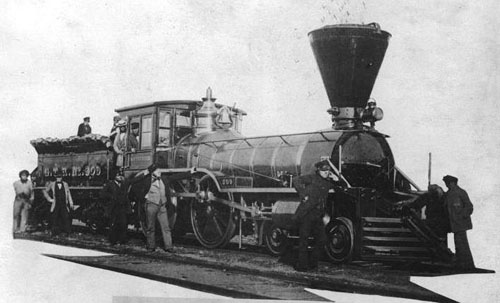

 STUART JORDAN looks at the early history of railways in Canada.
STUART JORDAN looks at the early history of railways in Canada.
In the early 19th Century, Lower Canada (later to merge with Upper Canada to form the United Province of Canada) was a British colony. The territory was the spoils of war ceded from France to Britain after the French defeat in the Seven Years War in 1763. Canada's British connections would help shape the early history of railways in the province.
The first railway in Canada was built in 1836, some ten years after the first chartered railway in the United States. The Champlain & St. Lawrence Railroad was built as a portage railway, to connect the St. Lawrence River and Lake Champlain. This route would cut down the length of time goods took to be moved between New York and Montreal – goods could leave New York by barge up the Hudson River, onto the Champlain Canal. Once reaching the lake, goods could be unloaded after a short trip up the Richelieu River, and then taken on the short railway journey to the St. Lawrence and ferried to Montreal.
The sixteen mile line was built to Standard 4'8½" Gauge, using pine rails with iron strapped to the surface. The wooden rails were later replaced by cast iron by the 1850s. The line ran from St. John on the Richelieu River to La Prairie on the St. Lawrence. The first locomotive on the line was the Dorchester, an 0-4-0 locomotive built by Robert Stephenson. Its short wheelbase gave it a skittish gait, which lead to it being given the nickname Kitten.
On 21st July 1836 three hundred people crowded the station at La Prairie to see the first train run on the C&SLRR. Distinguished guests included Lord Gosford, the Lieutenant-Governor of Lower Canada, and his political opponent Louis-Joseph Papineau. So many people crowded the train that Dorchester could not pull it. All the coaches behind the first two were uncoupled - these headed off under steam power, and the rest of the train followed on pulled by horses.
Regular services started four days later. Take up of freight services was disappointing, but demand for passenger services lead to extra horse-drawn trains being put on until more steam locomotives arrived on 1837. Charles Dickens rode the line in 1842 while in North America, which he wrote about in his travelogue American Notes. The line steadily expanded, to Rouse's Point in New York state in 1851, and the following year to St. Lambert, which is further up the river on the direct opposite bank to Montreal. In 1857 the C&SLRR merged with the Montreal & New York railway to the form the Montreal & Champlain Railroad.

'Samson' Locomotive, circa 1880, which is now preserved in the Nova Scotia Museum of Industry. It is the oldest remaining locomotive in Canada.
There was a rapid expansion of the railways in 1849, after the passing of the Railway Guarantee Act. This act promised railway builders' interest not exceeding 6% per annum on one half of the cost of a railway over seventy-five miles long. This impetus to expansion backfired however, as canny developers could build railways that might of otherwise not be successful, but they would still make a profit due to the government subsidy.

GTR Locomotive 'Trevithick' in 1859. The locomotive is named after the GTR superintendent Frederick H Trevithick, son of Richard Trevithick – inventor of the steam engine.
The Railway Guarantee Act lead to the Canadian government becoming all but bankrupt. The largest disaster of this period was the Grand Trunk Railroad from Montreal to Sarnia, incorporated in 1852. The GTR expanded and absorbed other railways for eight years as far as Toronto, but by the early 1860s it was on the brink of bankruptcy.
Civil War was breaking out south of the border in the US, and security fears from the large Union Army to the south (the US had last invaded Canada in 1812), and the later cross-border Fenian raids led to the need for a railway connecting the whole province, to enable quick troop movements. The call came to unite the colonies into a single confederation into a country that could unite and share the cost of a railway system.
The Intercolonial Railroad in 1877. Click image to view larger version.
The British North America Act, 1867, included the provision for an Intercolonial Railroad. It took around a decade for the route to be chosen and built. Existing lines were nationalised, with the route chosen being the one that was furthest away from the boarder with the US.
In the next article I will look at what happened next, with the creation of the Canadian Pacific transcontinental line.
We have many manufacturers that produce Canadian Outline stock in locomotives, coaches, and wagons.